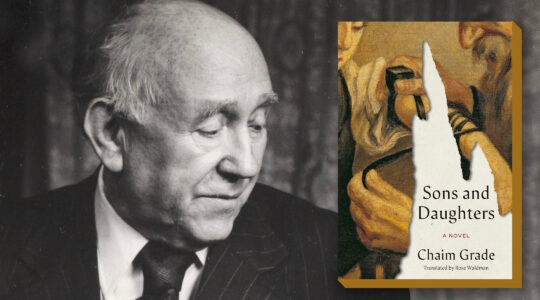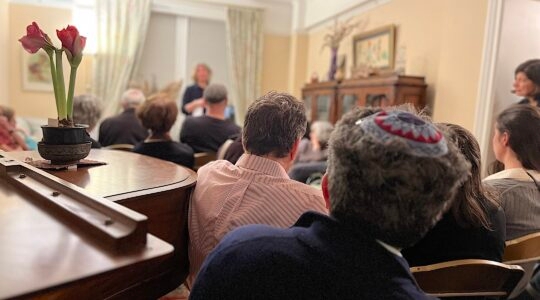Ever since the first exile of the Jewish people in 586 BCE, there have been multiple centers of Jewry. While most elements of Jewish life were centralized during the first temple era, everything changed when the leaders of the Jewish people were exiled to Babylonia.
As the map of the Jewish diaspora inched beyond the borders of Israel, rabbinic decision-making developed new traditions — those of the Israeli and of the Babylonian persuasion.
Our mesorah [tradition] transitioned from a centralized rabbinate to various centers of didaction – from Sura to Pumbeditha, to the Rhineland and beyond.
There is a rich tradition of dispute that is woven throughout this history. One might say that machloket, debate, is an essential characteristic of a beit midrash, a Jewish house of learning. “It is not in heaven” where decisions are made (Deuteronomy 30:12). And the Talmud suggests that what is “right” for Jews to practice is to be determined by rabbinic leaders here on earth, not in heaven. Further, debate in the spirit of Torah is applauded by the heavens above. The style of repartee of pre-medieval rabbis is fondly recorded throughout the texts of the Talmud, and it is still found in the beit midrash today. It is what we do and we do it well.
However, many conversations surrounding texts require solutions. As observant Jews, we can debate to the 11th hour what the intentions were of our foremothers and forefathers, but when it comes to Jewish practice, a conclusion needs to emerge in order for individuals to live their lives according to Jewish law.
It is with this historic lens that I approach the current debate about women in leadership roles that has hit a chord in the American Orthodox community. As one might imagine, there are a variety of opinions about what roles women should and should not be allowed to fill and what titles women leaders should or should not adopt. Many of these opinions were recently published in the Rabbinical Council of America’s Tradition Journal. Ironically, five of the six pieces published were authored by men. I focus here on the lone woman’s voice, that of an esteemed scholar and rabbinical court advocate Dr. Rachel Levmore.
I first thought the title of her piece, “A View From The Other Side,” implied from the other side of the mechitza, i.e. from a woman’s perspective. But perhaps it was meant to reflect Levmore’s geographic location – Israel — from the other side of the ocean.
In her description of the history of women’s leadership in Israel over the past decades, Levmore does not make an argument for rabbinate-granted certification. No argument is needed. Instead, example after example is presented of women halachic leadership that is approved and accepted by the Israeli Chief rabbinate, an institution that is quite stringent in its halachic interpretations.
Examples include to’anot rabbaniyyot, yoatzot halacha and heads of midrashoth – women’s advocates in religious courts, women experts in the rules of family purity and directors of women’s seminaries. In addition, the number of women who are being granted semicha [ordination] and being trained to be halachic judges by Orthodox yeshivot and rabbis increases every year.
Levmore recalls, “While controversy rages in religious circles on the American side of the ocean (circles which seem to parallel those in Israeli society), why in Israel does the issue of women functioning in the various rabbinic roles not raise such fierce ongoing discussion? Many times there is no discussion at all. In fact, the most that can be said is at times when a ‘new’ development arises there may be some voices raised against it. However, once it is ‘up and running everyone just ‘moves on.’”
She offers various reasons for the discrepancy between the two main centers of Jewry in today’s world, concluding that “In a nutshell, women serving in religious or rabbinic roles of leadership in Israel is a natural, sensible manifestation of kavod ha-beriyyot,” respect for all of God’s creations.
It might be time for those enraged by the notion of women serving as rabbinic leaders to take a step back and look at the full picture. Is the debate a conflict for the sake of heaven, or is it a turf war?
In Israel, people do not seem particularly bothered by the increasing presence of women in places of Torah leadership.
In fact, the observant community and even the rabbinate have accepted, endorsed, and strengthened the pipeline of women rabbinic leaders. So why the growing concern by selective religious authorities in the American Orthodox territory?
Is it mesorah [tradition]? Is it a limited pool of pulpits?
Many American Orthodox families send their children to study in Israel for a year, or two, after high school. And it is in Israel that a number of the most prestigious yeshivot are training women to be decisors and even judges of Jewish law. At the same time, statements are issued here by the RCA denouncing such practice, in effect denouncing the facts on the ground of Israel.
The fact that Levmore’s piece is included in the RCA’s Tradition Journal is a spark of light and a great step in the right direction. One hopes that the RCA finally is willing to focus on meeting the needs of the community in its entirety, following the examples of their Israeli male and female colleagues.
Sharon Weiss-Greenberg, PhD is executive director of JOFA (Jewish Orthodox Feminist Alliance).
The New York Jewish Week brings you the stories behind the headlines, keeping you connected to Jewish life in New York. Help sustain the reporting you trust by donating today.





